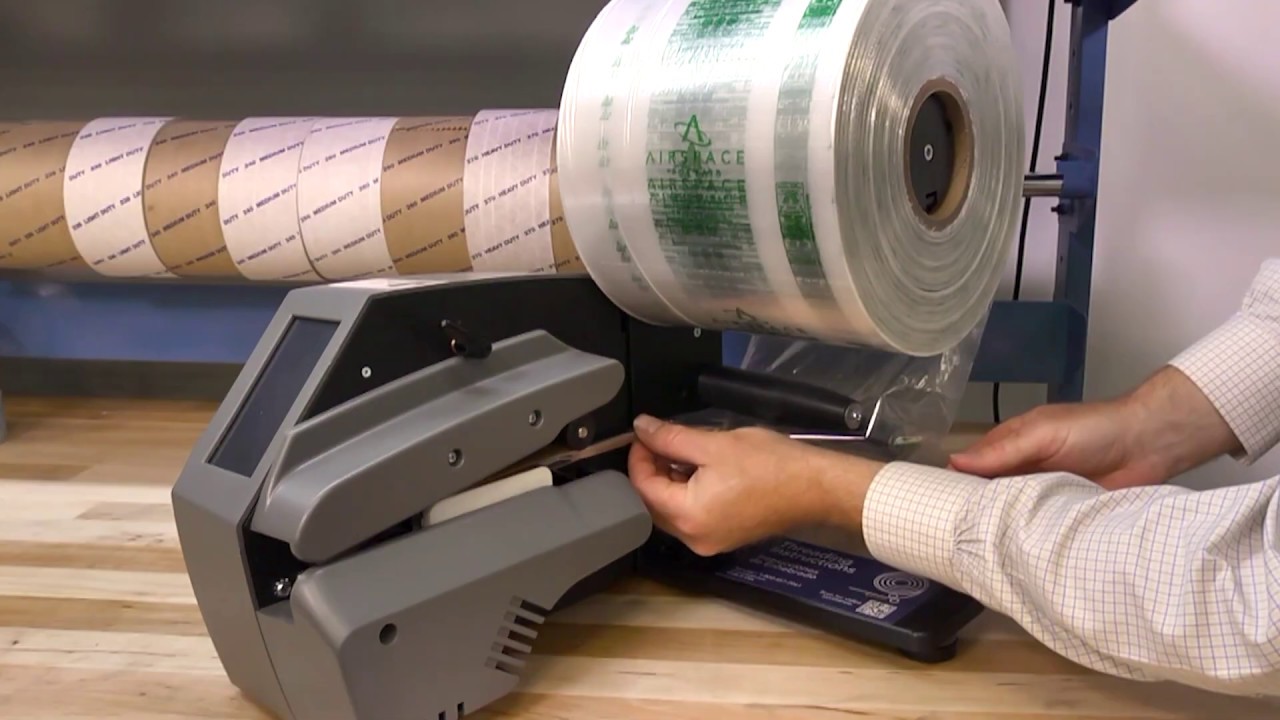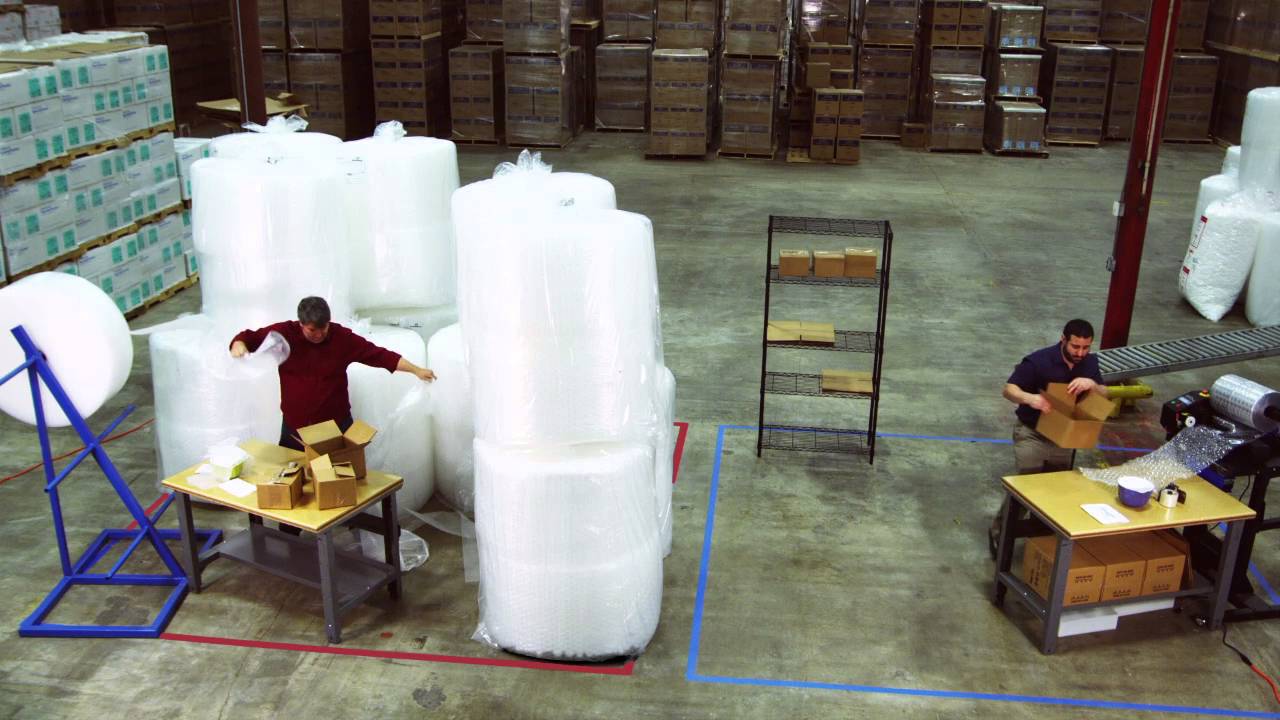Posted by Mike Cunningham on Apr 4th 2024
Polyair AirSpace G6 Bubble Film verses Bubble Bundles
Bubble wrap is one of the most popular packaging products available. While bubble wrap rolls can prove a good, lightweight choice for protecting products, they have drawbacks too. They can be bulky to store and transport, consuming lots of energy to move through supply chains.
So, what is the solution? Enter bubble film on demand. It can help reduce your material use, free up storage space, and cut your transport costs and emissions. It can be a game-changer for eco and cost-conscious companies!
Here we explain on-demand bubble wrap and its benefits, comparing it to traditional bubble wrap for packaging.
What is Bubble Film on Demand?
Bubble film on demand is a type of inflatable air cushion packaging. It combines the protective benefits of bubble wrap with the benefits of using a more compact packaging material.
It comes on deflated, compact, and manageable rolls in boxes that can be stacked and stored anywhere in a warehouse or facility. Before packing, the material is then inflated on-demand, as and when needed.
How Bubble Film on Demand works:
Bubble film on demand is designed for use with an inflation system. The deflated film is passed through an inflation machine as and when needed.

Typically, bubble film on demand inflation systems have a small footprint and can produce ambient air – there is no need for a compressed airline to be fitted.
These systems can inflate bubble film at a high rate of speed and can sit neatly on a packing station or on a purpose-made stand. A winder is commonly available to create bundles that are easy to handle.
Unpacking the Benefits of Bubble Film on Demand:
Now you know what bubble film on demand is, what about the benefits it offers? Compared to regular bubble rolls, Bubble film on Demand offers significant advantages.
One of the main advantages offered by bubble film on demand is its cost effectiveness.
Initially, the rolls of film are compact to ship and store. This means you can reduce associated transport and storage costs. If you are paying per pallet space for your storage, this could make a huge difference compared to traditional bubble rolls.
In addition, using the automated inflation machine can help you control the amount of packaging material you use.
As using bubble film on demand is a type of packaging automation, it can help you more effectively control labor costs too, as your packing will be more efficient!
Environmental impact of using Bubble Film on Demand:
Not only can Bubble film on Demand save you money, but it also has a positive environmental impact.
Unlike traditional bubble rolls, bubble film on demand produces the exact amount of cushioning needed for each pack. This eliminates material use and overall packaging waste created.
Plus, the more compact material can dramatically reduce CO2 impact of your supply chain.
How Bubble Film on Demand can streamline your packing process:
A switch to Bubble film on demand bubble packaging can also offer efficiency savings and streamline your packing processes.
It all starts during goods in handing. Traditional bubble wrap is big and bulky compared to bubble film on demand. Bubble wrap, even when compressed, can take up a significant amount of space relative to its weight. Its irregular shape can also make it difficult to stack neatly and efficiently, leading to wasted space and inefficient use of transportation capacity. This all requires extra handling and takes up time.

However, just one pallet of bubble film on demand can give your warehouse team back a significant amount of time that they were spending unloading cumbersome rolls of bubble wrap.
The speedy inflation systems can deliver the protective packaging you need in seconds. This can cut pack times and help you increase the number of cartons you are able to pack and ship.
Comparing Bubble Film on Demand and Buying Bubble Wrap:
Now we know about bubble film on demand, when we consider bubble film vs. buying bubble wrap, how do the two compare?
Key similarities and differences – both options provide excellent protection and cushioning for your products, so they can be used for easy wrapping and filling. The key difference between the two is their format. This impacts how you handle, transport, and store the packaging, as well as your packing processes. Bubble film on demand can be produced instantly in the right quantity, eliminating waste.
Cost comparison – on face value traditional bubble wrap rolls will look cheaper. However, bubble film on demand systems can offer significant savings in the long run. While the initial investment may be higher, especially for larger-scale operations, the savings across storage, transport, labor, efficiency, and the environment payback quickly.
Sustainability – when it comes to the environment, bubble film on demand systems has the upper hand. The compact material can help significantly decrease your emissions and fuel usage, plus bubble film delivery helps you cut your material use, reducing packaging waste.
In conclusion, making the switch from buying bulk bubble wrap to bubble film on demand is a smart packaging choice that can deliver valuable cost-savings, while reducing your environmental impact. The eco-friendly swap can also offer improved productivity and significant space savings.
So, if you are looking for ways to prioritize sustainability, while keeping costs in check and protecting your products, bubble film on demand could be the solution for you.
Contact us now to find out about our eco-friendly packaging options and begin safeguarding your products in a sustainable manner. Call 813 242 6995 or sales@quickpakinc.com

